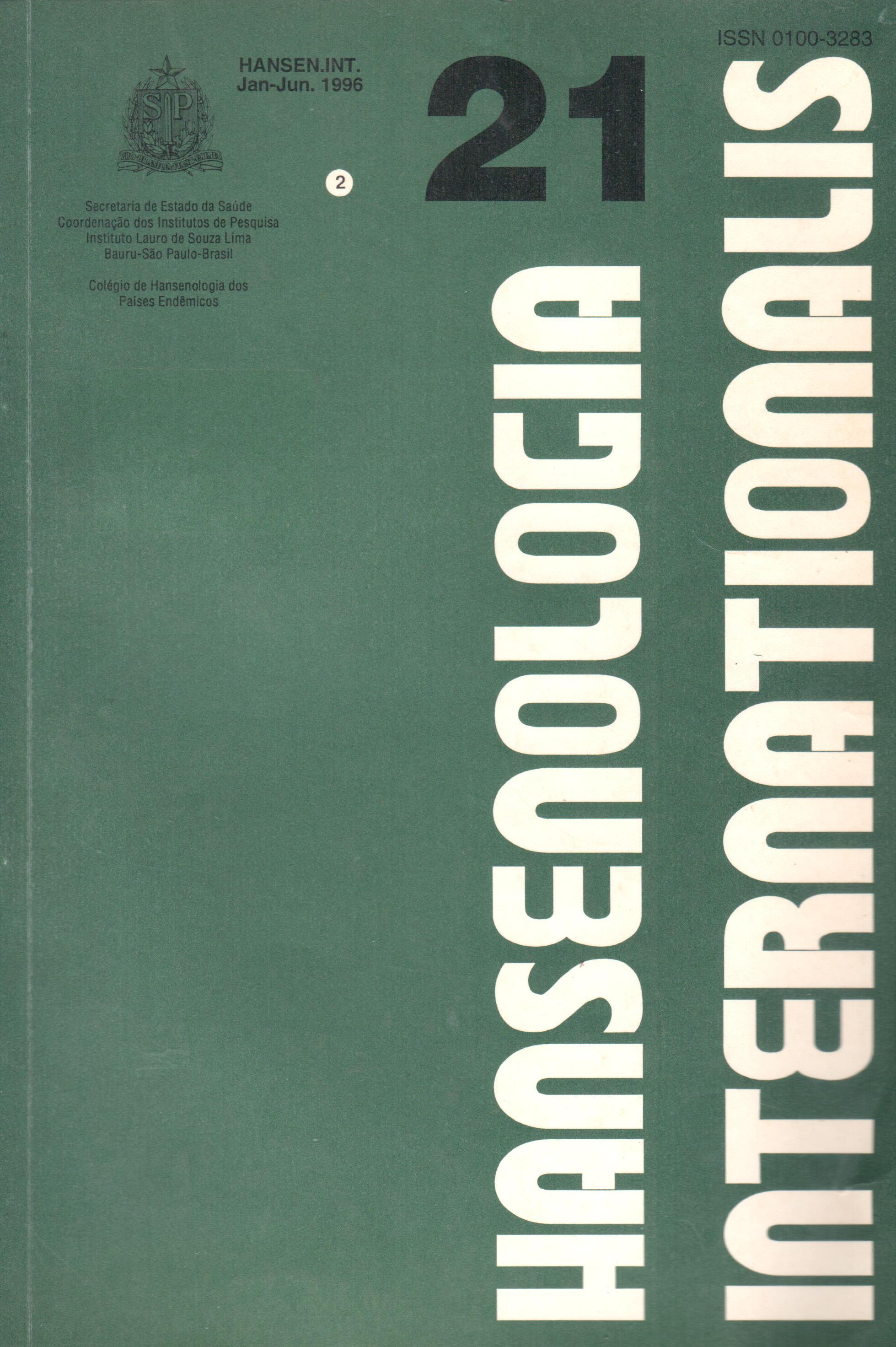Abstract
The mechanism of association of hypopigmentation and sensorial loss in a leprosy macular lesions has not been clarified yet. The biopsy of a macular lesion on the medial face of the right forearm of a fourteen-year old male leprosy patient was submitted to DOPA-staining for
melanocytes, which is specific for the melanocytic tyrosinase enzyme and it is a proper method for identifying and counting these cells in the skin. A contralateral specimen of the same patient went through the same procedure as a control experiment. The specimen from the macular lesion
showed a higher number of DOPA-stained melanocytes than the control fragment. Dermal melanocytes were present in high amounts in the abnormal specimen. Increased expression of tyrosinase by melanocytes in the macular lesions may reflect a positive feed-back stimulus
represented by the lack of substrate tyrosine, which may in turn be utilized by the mycobacterial agent. Ultrastructural study of the normal and pathological specimens showed no significant differences in the morphological appearance of melanocytes and their melanosomes. These results suggest that the utilization of phenolic compound by the Mycobacterium leprae may be involved in the mechanism of hypopigmentation. A higher number of cases will be necessary to confirm this hypothesis.
References
2. CRAMER, S.F. The origin of epidermal melanocytes. Implications for histogenesis of nevi and melaomas. Arch Pathol Lab Med:115:115-119, 1991.
3. HOLBROOK, K.A. & WOLFF, K. The structure and development of skin. In: Fitzpatrick , T. B. et al. Dermatology in general Medicine. New York, Mc Graw Hill, 1993. p. 97-144.
4. JIMBOW, K. Formation, chemical composition and function of melanin pigments. In: Matoltsy AM. Biology of the Integument. New York, SpringerVerlag, 1984. p. 278.
5. JIMBOW, K.; QUEVEDO, W.C.; FITZPATRICK, T.B.; SZABÓ, G. Biology of melanocytes. In: FITZPATRICK T.B. et al. Dermatology in general Medicine. New York, Mc Graw Hill Inc.1.993. p.261-288.
6. JOB, C.K. Electron microscopic study of hypopigmented lesions in leprosy: A preliminary report. Br. J. Dermatol 87:200, 1972,
7. MC DOUGALL, A.C. & ULRICH, M.I. Electron microscopic study of hypopigmented lesions in leprosy. A preliminary report. Br. J. Dermatol 87:200, 1972.
8. MC DOUGALL, A.C. & ULRICH, M.I. Mycobacterial disease: leprosy. In: Fitzpatrick TB, Eisen AZ, Wolff D, Freedberg IM,Austen KF. Dermatology in general Medicine. New York, Mc Graw Hill, 1993. p. 2395-2409.
9. MOSHER D.B.; FITZPATRICK, T.B; HORI, Y. & ORTONNE, J.P. Disorders of Pigmentation. In: Fitzpatrick TB, Eisen AZ, Wolff D, Freedberg IM,
Austen KF. Dermatology in general Medicine. New York, Mc Graw Hill Inc., 1993, 903-995.
10. PRABHAKARAN, K. Oxidation of phenolic compounds by Mycobacterium leprae and inhibition of phenolase by substrate analogues and copper chelators. J Bacteriol 95:2051,1968.
11. PRABHAKARAN, K. Effect of inhibitors on 12. SEHGAL, V.N. Hypopigmented lesions in leprosy. Br. J. phenoloxidases on Mycobacterium leprae. J Dermatol. 89:99,1973.

This work is licensed under a Creative Commons Attribution 4.0 International License.
